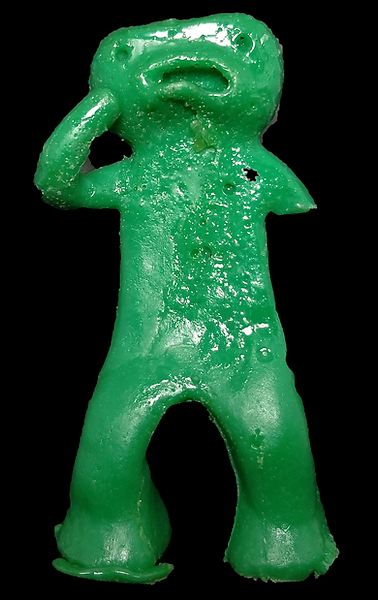
Justin W.H. Yuen
Wind Powered Toy Car
An independent study project revealed an opportunity to add wind power to STEM education for elementary schools
Independent Study, Spring 2016
Goal
Design a wind powered toy car that is affordable and easy to build by children.
Results
A proof of concept for a STEM activity in elementary schools.

I was fortunate to have the opportunity to take an independent study course with Professor Gary Benenson from City College during my engineering curriculum. Professor Gary Benenson is the Project Director of City Technology, which designs activities and STEM lesson plans to integrate engineering into US elementary schools. Some existing projects include cars with motors that are powered by solar panels or hand crank generators. My goal for the semester was to determine a way to power a motorized toy car with the wind.
I wanted the toy to be made by common household items because it's an affordable and creative way to teach children to be resourceful and become familiar with the physical properties of their materials. Children also love having the ability to customize and decorate their toys.
Approach
Power a motor car from City Technology with a capacitor that can be charged by the wind.
Household items
Cardboard, masking tape, skewers, packaging tube
Purchased materials
Plastic turbines, a DIY hobby generator, a 10F capacitor, and electrical wires
Choosing a car configuration from City Technology


Some car configurations that City Technology use are friction-drive (left) and belt-drive (right). I made a car with the friction-drive configuration and noticed the motor and the wheels would skip and stop moving the car sometimes. On the the other hand, I was hesitant to use the belt-drive because it required more materials. So I decided to use a direct-drive configuration shown below.

The direct-drive is similiar to the friction-drive, except the wheel of the motor is in contact with the ground. Although it would've been ideal to have 2 motors, and therefore 1 powered wheel on each side, I chose to put only 1 motor to reduce the amount of electricity used. Having two motors would double the current drawn from the capacitor and halve the amount of time the car can run in one charge.

Plastic Turbine - 6 cm long from tip to tip

Simple Circuit Diagram
Designing the tower and base
A long 1 ft. tower was implemented so the children would have enough room to test turbines of various lengths. Also, on days that the winds aren't strong or consistent, the long tower allows the turbine to be high enough to be blown by a small fan on a table. A triangular support was added to keep the tower straight.
The prototype was kept as a skeleton to reduce weight and to also give children the opportunity to design the toy themselves.
Building the prototype



Since the car is bound to hit something when the kids play with it, I initially wanted to design it to be durable. I made the base 16" long and 1" thick with cardboard sheets. At the end of the car, I cut out a slit to make room for the motor. While testing the car, the car didn't move. I realized the motor was too heavy and the cardboard base was too long to support it. I compromised by shortening the length of the base to a little over a foot.

Direct-drive configuration



I used a thick and sturdy cardboard tube as the tower. I cut a slit at the top of the tower for the generator. I placed the generator at the very top of the tower because I wanted the turbine blades to be as high as possible. Also, cutting out a slit at the top edges was easier than making a circular hole further down the tube. The ends of the generator was connected by alligator clips so children wouldn't need to solder the wires. Finally, another triangular support was added to keep the motor snug and tape was used to keep all the parts together.








Toy car customized with googly eyes and feathers to resemble a chicken

Results
With limited resources, I was able to make a car with a 6:1 charging to discharging time ratio, meaning the child holds the toy car in front of a fan for 6 minutes for every minute they want the car to move. The 10F capacitor took 28 minutes to fully charge (at 85% of voltage rating) and powered the car for a total of 5 minutes.
Design Implications
The biggest issue with the toy is its long charging time. Elementary school students may not want their patience tested. Additionally, it is not efficient or ideal to use a fan to charge the car. However, harnessing natural wind and converting it into mechanical energy is difficult.
To increase the amount of time the car can run, the electricity drawn by the motor must be decreased. Therefore, the torque of the wheels connected to the motor must be decreased. This can be achieved by reduce the weight of the car, using stronger and lighter material, or even using small wheels.
If time permits, I would redesign the car to be a lot smaller and compact. After testing the car and letting it bump into walls, I realized the car didn't have to be as sturdy. Another consideration for the second model would be to find a way to increase the RPM of the generator. Some possible options I thought of were adding a gear train, a lighter and longer turbine, or a nozzle.